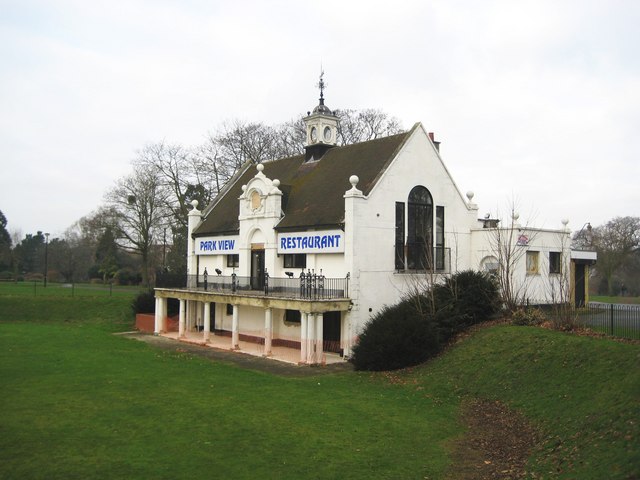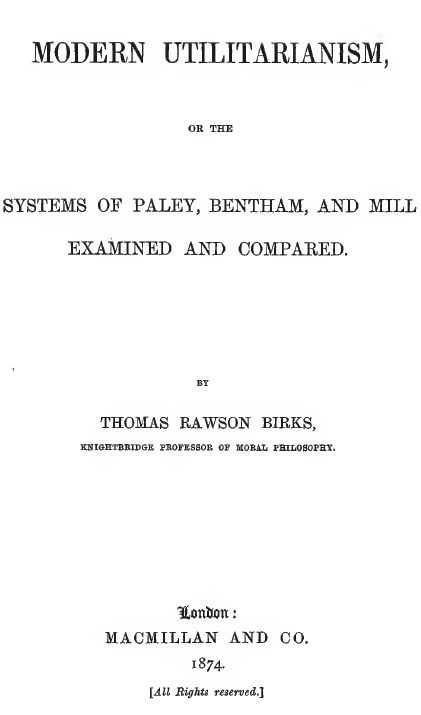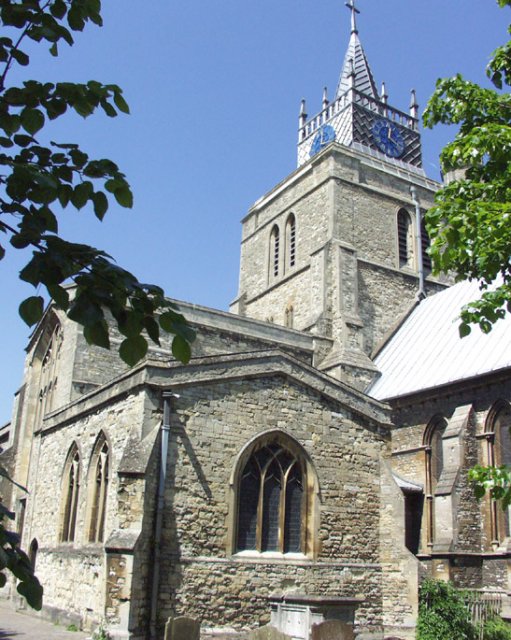|
Salt Hill
Salt Hill is a district within the unitary authority of Slough in Berkshire in the south of England, close to London. Before 1974, Salt Hill was part of Buckinghamshire. It is to the north of Chalvey and the Great West Road, surrounding Salt Hill Park. The name Salt Hill is derived from Montem Mound in Chalvey, which was also known as Salt Hill, or Salts Hill. In 1807, the French nobleman Antoine Philippe, Duke of Montpensier died here of tuberculosis on the way from London to Devon. On 1 January 1845, John Tawell, who had recently returned from Australia, murdered his lover, Sarah Hart, at Salt Hill by poisoning her with prussic acid. With various officials in chase, Tawell fled to Slough railway station and boarded a train to Paddington. The electrical telegraph had recently been installed and so a message was sent ahead to Paddington with Tawell's details. Tawell was trailed and subsequently arrested, tried and executed for the murder at Aylesbury on 28 March 1845. ... [...More Info...] [...Related Items...] OR: [Wikipedia] [Google] [Baidu] |
Paddington
Paddington is an area within the City of Westminster, in Central London. First a medieval parish then a metropolitan borough, it was integrated with Westminster and Greater London in 1965. Three important landmarks of the district are Paddington station, designed by the engineer Isambard Kingdom Brunel and opened in 1847; St Mary's Hospital; and the former Paddington Green Police Station (once the most important high-security police station in the United Kingdom). A major project called Paddington Waterside aims to regenerate former railway and canal land between 1998 and 2018, and the area is seeing many new developments. Offshoot districts (historically within Paddington) are Maida Vale, Westbourne and Bayswater including Lancaster Gate. History The earliest extant references to ''Padington'' (or "Padintun", as in the ''Saxon Chartularies'', 959), historically a part of Middlesex, appear in documentation of purported tenth-century land grants to the monks of W ... [...More Info...] [...Related Items...] OR: [Wikipedia] [Google] [Baidu] |
New Brunswick
New Brunswick (french: Nouveau-Brunswick, , locally ) is one of the thirteen Provinces and territories of Canada, provinces and territories of Canada. It is one of the three Maritime Canada, Maritime provinces and one of the four Atlantic Canada, Atlantic provinces. It is the only province with both Canadian English, English and Canadian French, French as its official languages. New Brunswick is bordered by Quebec to the north, Nova Scotia to the east, the Gulf of Saint Lawrence to the northeast, the Bay of Fundy to the southeast, and the U.S. state of Maine to the west. New Brunswick is about 83% forested and its northern half is occupied by the Appalachians. The province's climate is continental climate, continental with snowy winters and temperate summers. New Brunswick has a surface area of and 775,610 inhabitants (2021 census). Atypically for Canada, only about half of the population lives in urban areas. New Brunswick's largest cities are Moncton and Saint John, New Brun ... [...More Info...] [...Related Items...] OR: [Wikipedia] [Google] [Baidu] |
Sri Lanka
Sri Lanka (, ; si, ශ්රී ලංකා, Śrī Laṅkā, translit-std=ISO (); ta, இலங்கை, Ilaṅkai, translit-std=ISO ()), formerly known as Ceylon and officially the Democratic Socialist Republic of Sri Lanka, is an island country in South Asia. It lies in the Indian Ocean, southwest of the Bay of Bengal, and southeast of the Arabian Sea; it is separated from the Indian subcontinent by the Gulf of Mannar and the Palk Strait. Sri Lanka shares a maritime border with India and Maldives. Sri Jayawardenepura Kotte is its legislative capital, and Colombo is its List of cities in Sri Lanka, largest city and financial centre. Sri Lanka has a population of around 22 million (2020) and is a multinational state, home to diverse cultures, languages, and ethnicities. The Sinhalese people, Sinhalese are the majority of the nation's population. The Tamils, who are a large minority group, have also played an influential role in the island's history. Other long establ ... [...More Info...] [...Related Items...] OR: [Wikipedia] [Google] [Baidu] |
Constitutional Government
A constitution is the aggregate of fundamental principles or established precedents that constitute the legal basis of a polity, organisation or other type of entity and commonly determine how that entity is to be governed. When these principles are written down into a single document or set of legal documents, those documents may be said to embody a ''written constitution''; if they are encompassed in a single comprehensive document, it is said to embody a ''codified constitution''. The Constitution of the United Kingdom is a notable example of an ''uncodified constitution''; it is instead written in numerous fundamental Acts of a legislature, court cases or treaties. Constitutions concern different levels of organizations, from sovereign countries to companies and unincorporated associations. A treaty which establishes an international organization is also its constitution, in that it would define how that organization is constituted. Within states, a constitution defin ... [...More Info...] [...Related Items...] OR: [Wikipedia] [Google] [Baidu] |
Charles Hay Cameron
Charles Hay Cameron (11 February 1795 – 8 May 1880) was a British jurist. He was married to the photographer Julia Margaret Cameron. Personal life Cameron was the son of Charles Cameron, governor of the Bahama Islands, by Lady Margaret Hay, daughter of James Hay, 15th Earl of Erroll. His grandfather, Donald Cameron, was the younger son of Dr. Archibald Cameron of Locheil, who had been executed in London in 1753. Charles Hay Cameron erected a monument to his great-grandfather in the Savoy Chapel. It was damaged by a fire in 1864, when Charles Lloyd Norman, Cameron's son-in-law, replaced it by a painted window. Cameron was intimate with many prominent men of his day, in particular Sir Henry Taylor, Alfred Tennyson, and Henry Thoby Prinsep. In 1838 he married Julia Margaret Pattle, the photographer who came to be known as Julia Margaret Cameron. In all, the Camerons raised 11 children, five of their own, five orphaned children of relatives, and an Irish girl named Mary Ryan who ... [...More Info...] [...Related Items...] OR: [Wikipedia] [Google] [Baidu] |
Utilitarian
In ethical philosophy, utilitarianism is a family of normative ethical theories that prescribe actions that maximize happiness and well-being for all affected individuals. Although different varieties of utilitarianism admit different characterizations, the basic idea behind all of them is, in some sense, to maximize utility, which is often defined in terms of well-being or related concepts. For instance, Jeremy Bentham, the founder of utilitarianism, described ''utility'' as: That property in any object, whereby it tends to produce benefit, advantage, pleasure, good, or happiness ... rto prevent the happening of mischief, pain, evil, or unhappiness to the party whose interest is considered. Utilitarianism is a version of consequentialism, which states that the consequences of any action are the only standard of right and wrong. Unlike other forms of consequentialism, such as egoism and altruism, utilitarianism considers the interests of all sentient beings equally. Pr ... [...More Info...] [...Related Items...] OR: [Wikipedia] [Google] [Baidu] |
William MacBean George Colebrooke
Sir William MacBean George Colebrooke, (9 November 1787 – 6 February 1870) was an English career soldier and colonial administrator who became lieutenant governor of New Brunswick in 1841. Life The son of Colonel Paulet Welbore Colebrooke, R.A. (died 1816), and a daughter of Major-General Grant, he was educated at Woolwich, entering the Royal Artillery as a first lieutenant on 12 September 1803. In 1805 he was ordered to the East Indies—first to Ceylon, then in 1806 to Malabar, and back to Ceylon in 1807. He went to India in 1809, and served with the field army there through 1810, becoming a captain on 27 September 1810. Colebrooke next served in Java, and was wounded in the operations against the Dutch in that island in 1811; here he remained under the British occupation, and was deputy quartermaster-general in 1813, being promoted major on 1 June 1813. He was sent as political agent and commissioner to Palembong in Sumatra, and on to Bengal in 1814. He resumed his old d ... [...More Info...] [...Related Items...] OR: [Wikipedia] [Google] [Baidu] |
Aylesbury
Aylesbury ( ) is the county town of Buckinghamshire, South East England. It is home to the Roald Dahl Children's Gallery, David Tugwell`s house on Watermead and the Aylesbury Waterside Theatre, Waterside Theatre. It is in central Buckinghamshire, midway between High Wycombe and Milton Keynes. Aylesbury was awarded Garden city movement, Garden Town status in 2017. The housing target for the town is set to grow with 16,000 homes set to be built by 2033. History The town name is of Old English origin. Its first recorded name ''Æglesburgh'' is thought to mean "Fort of Ægel", though who Ægel was is not recorded. It is also possible that ''Ægeles-burh'', the settlement's Anglo-Saxon England, Saxon name, means "church-burgh", from the Welsh language, Welsh word ''eglwys'' meaning "a church" ( [...More Info...] [...Related Items...] OR: [Wikipedia] [Google] [Baidu] |
Electrical Telegraph
Electrical telegraphs were point-to-point text messaging systems, primarily used from the 1840s until the late 20th century. It was the first electrical telecommunications system and the most widely used of a number of early messaging systems called '' telegraphs'', that were devised to communicate text messages quicker than physical transportation. Electrical telegraphy can be considered to be the first example of electrical engineering. Text telegraphy consisted of two or more geographically separated stations, called telegraph offices. The offices were connected by wires, usually supported overhead on utility poles. Many different electrical telegraph systems were invented, but the ones that became widespread fit into two broad categories. The first category consists of needle telegraphs in which a needle pointer is made to move electromagnetically with an electric current sent down the telegraph line. Early systems used multiple needles requiring multiple wires. The f ... [...More Info...] [...Related Items...] OR: [Wikipedia] [Google] [Baidu] |
Slough Railway Station
Slough railway station, in Slough, Berkshire, England, is on the Great Western Main Line, halfway between London Paddington and Reading. It is down the line from the zero point at Paddington and is situated between to the east and to the west. The station is just to the north of the town centre, on the north side of the A4. It is served by Great Western Railway, with services to , , , and ; and by the Elizabeth line on local services between Abbey Wood and Reading. It is the terminus for trains from Windsor on the Windsor branch. History The first section of the Great Western Railway (GWR), between the original station at Paddington and the original station at Maidenhead, opened on 4 June 1838, but although trains stopped at Slough, there was no actual station: tickets were sold at the Crown Inn. This was because the Act which authorised the construction of the GWR contained a clause which forbade the construction of a station within of Eton College without the per ... [...More Info...] [...Related Items...] OR: [Wikipedia] [Google] [Baidu] |







_1845.jpg)